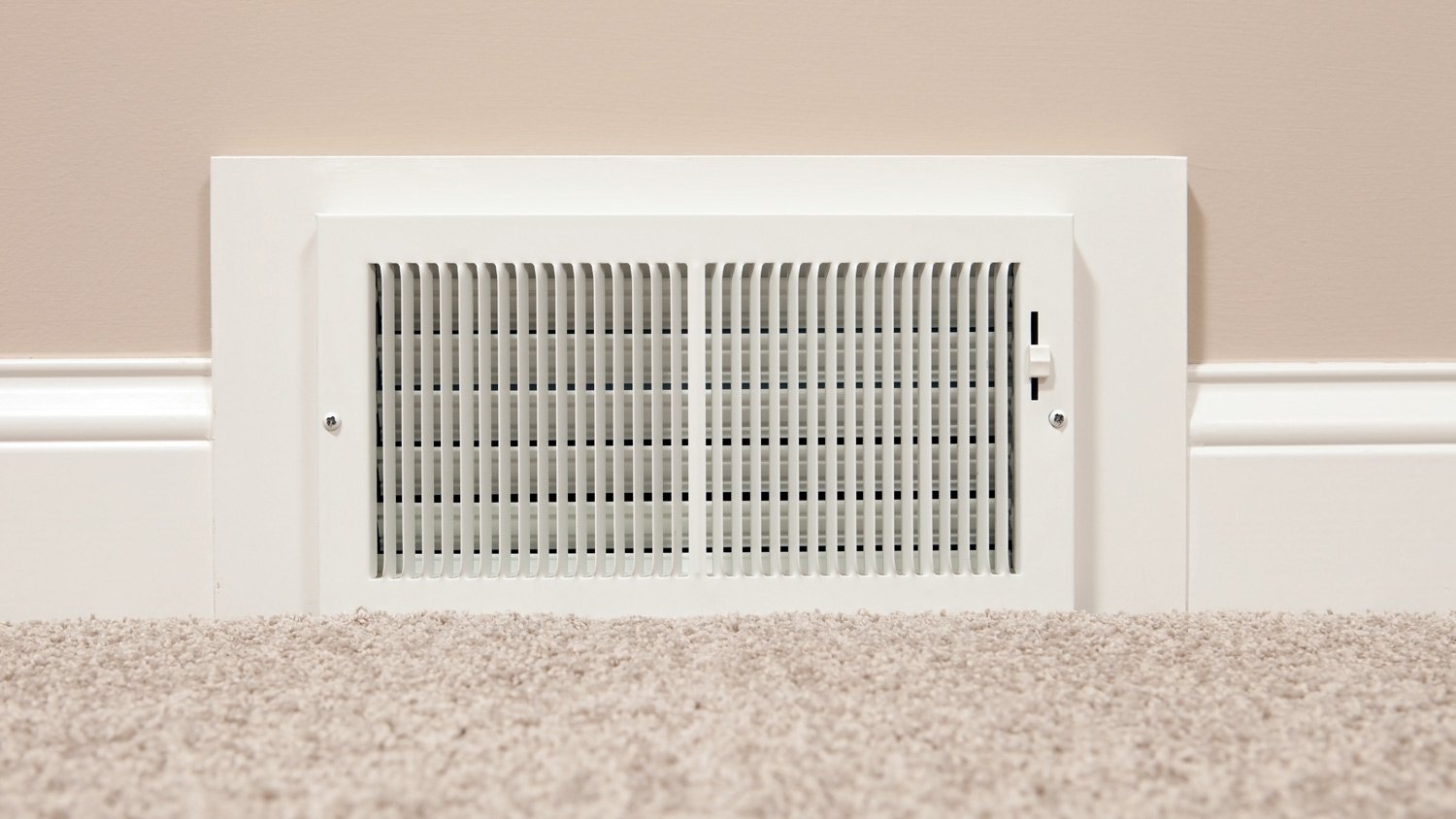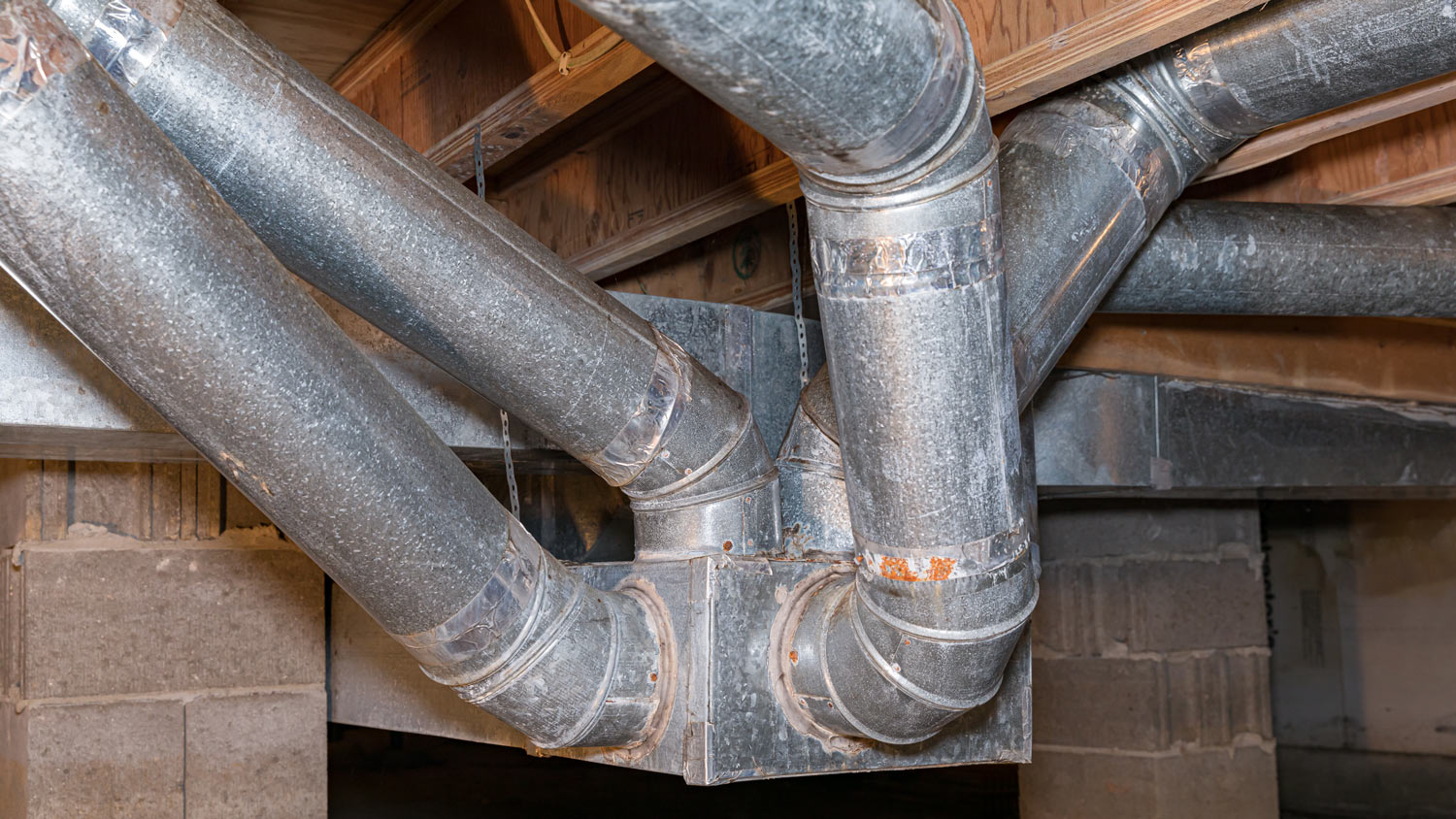
What you’ll pay in Columbus, OH, for furnace repairs depends on many factors. Here’s a breakdown of what can go wrong and the cost to fix those issues.
Leaky ducts likely made your home an icebox


Dirty filters, leaky ducts, and poor insulation can cause cold return vents.
Leaky ducts often cause cold air to blow even after cranking the heat up.
20-30% of air, especially hot air, is lost because of leaky ducts.
Cracked, holey ductwork needs sealing or replacement.
There's nothing worse than feeling a blast of cold air when you're expecting a toasty home to go with those sweaters and pumpkin spice lattes. Leaky ducts are usually the cause of cold return vents, but you might have other issues. Let's explore why there's cold air coming from the return vent despite cranking the heat up.

Leaky ducts are almost always why your return vents keep blasting chilly air even though you need heat. However, they’re not the only cause of cold return vents. Before you call your local duct installer to inspect your ducts for leaks, you should look into these other possible causes first and rule them out.
If it feels like a brisk fall day indoors when you put the heat on, chances are that the filter is caked in dust and dirt. Dirty HVAC filters can cause a host of problems like inefficient airflow, high energy bills, and spreading allergens around your home. They can also block the flow of hot air from the furnace.
Regularly cleaning your filter, and replacing it when necessary, will keep your HVAC system in top form and ensure you’ll stay warm and cozy.
Cold air coming out of the vents can be a sign of a broken ignitor or other furnace troubles. While ignitors aren't the only part of the furnace that can malfunction, they're usually the most obvious one.
Check out the furnace area. Does it seem unusually cold there? If it does and you keep hearing a clicking noise, but no air is coming out, you should contact a local furnace professional right away.
If you’re constantly shivering at home, your home might be poorly insulated all over or just in one area. Some homes completely lack insulation in areas with low foot traffic to save money on installation and maintenance. Aging, crumbling insulation due for replacement is your home’s equivalent of wearing a worn-out sweater that stopped keeping you warm long ago. Except unlike the sweater, you can’t eventually see through your walls to determine if your home is poorly insulated.
If your HVAC system's return passages run through areas that are uninsulated, it can cause trapped cold air to circulate and spread the winter breeze to your living room where you didn't want it. You might want to give your local insulation contractor a ring to assess the condition of your home’s insulation. They can determine which areas have poor or no insulation so that return passages stop having cold air to pick up in the first place.
Smart thermostats offer so much convenience compared to analog models, but they're just as susceptible to glitches and being hacked as any other smart device. Technical problems can cause it to blast out cold air instead of hot or vice versa.
If it's analog, check that your thermostat is correctly calibrated. If the batteries haven't been changed in a while, swap out the dying batteries and remove any gunk from its inner workings. Gunked-up elements can make it malfunction.
If there aren't any technical issues with your smart thermostat and the other causes on this list can be ruled out, this is a good time to change your Wi-Fi password in case of unwanted guests.
Ductwork needs to be just the right circumference for your home. If the ducts are too big, the air pressure will be too low and not force the hot air from the furnace to its destination. If the ducts are too small, the airflow will be weak and the heat won't be evenly distributed.
If your ducts are the wrong size altogether, you may need to call your local duct installer to swap them out.
If none of the other problems above apply to your home, there’s a good chance that your ducts are leaking. According to ENERGY STAR, 20 to 30% of the air in a typical home will be lost because of leaky ducts. All it takes is 5 to 10% of heat loss to make your home feel like an ice hockey rink. This is because the cold and unconditioned air from uninsulated rooms like garages and attics gets into the ductwork, mixes with the toasty emissions from the furnace, and then sends goosebumps your way instead of waves of warmth like you're a happy lizard on a basking rock.
This situation displeases both the human (and reptile) occupants, and it means that holes, cracks, and disconnected joints in your ductwork need to be addressed.

If leaky ducts are causing cold return vents, patching the source of the leaks and sealing your ducts is the way to go. If your ducts are old and riddled with more cracks than weather-beaten hands, it could be time to assess if you should clean, seal, or replace air ducts.
Per ENERGY STAR, attics are the biggest sources of air leaks that spike utility bills. Even if they're insulated, open duct chases and hatches tend to be hidden under the insulation. Hot air rises, so it only makes sense it goes to the attic instead of where you want it to go! You might be able to patch smaller leaks yourself and leave chases and large holes to the pros.
If it’s time for your ducts to go because of age or being the wrong size for your home, you might also want to consider installing a ductless system.
The average cost of duct sealing is $2,250, or around $1 per square foot. Inspections average around $150, plus $300 for pressure testing after the duct professional seals them.
For most homeowners, installing new HVAC systems costs around $7,500, but the cost to install new ductwork can be as high as $22,000.
Ductless heating and cooling systems cost $1,200 to $17,000, with an average of $7,500 for a multi-zone system.
If you’re a particularly handy homeowner, you may be tempted to DIY this project and save about 90% of the typical duct sealing cost. With the proper tools and safety equipment, you can fix minor cracks in the ductwork yourself, but more complex jobs like replacing and fixing large leaks should be left to the pros.
It can be difficult to locate the duct leaks, and improper DIY sealing will likely have you calling a local ductwork pro to remedy the problem.
From average costs to expert advice, get all the answers you need to get your job done.

What you’ll pay in Columbus, OH, for furnace repairs depends on many factors. Here’s a breakdown of what can go wrong and the cost to fix those issues.

A mini-split allows for zoned cooling, helpful for cooling spaces like garages. Learn the cost to install a mini-split unit in a garage with this guide.

Your leaky ductwork may be hiking up your energy bills. We explore the cost of checking air ducts for leaks, which may be worth it for your home.

If your window AC needs some TLC, learn who to hire to clean and repair window AC units. Check out what you can do as a DIYer and what’s best left to a pro.

HVAC dampers are crucial for maintaining comfortable and consistent temperatures in zoned systems. Learn what a damper is and how it works in this guide.

For your furnace to run, the pilot light needs to be on—so what do you do when it goes out? Learn how to relight the pilot light on a furnace in this guide.